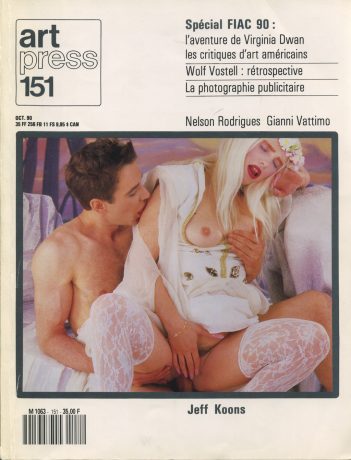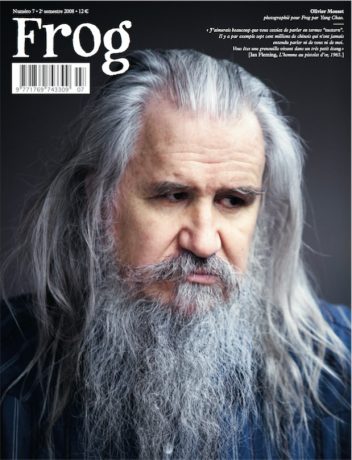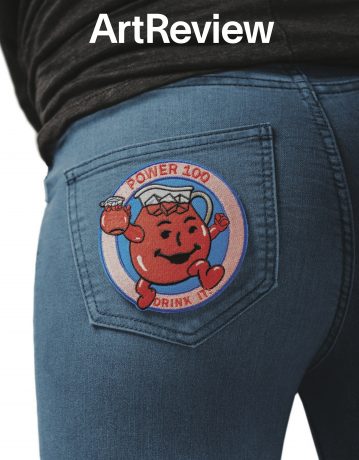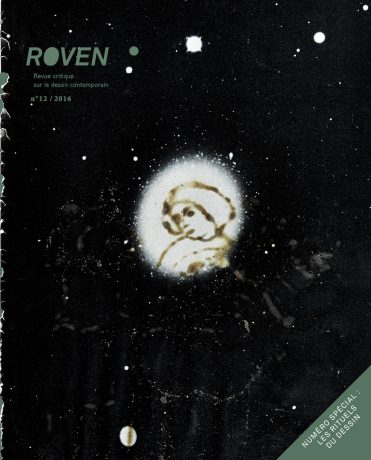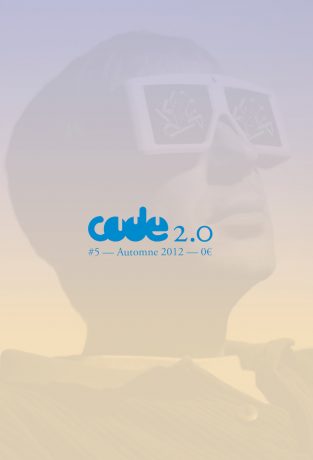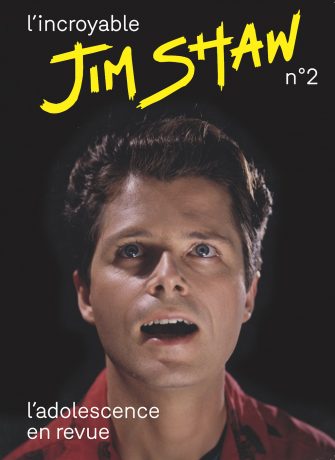Where have all those reviews gone?
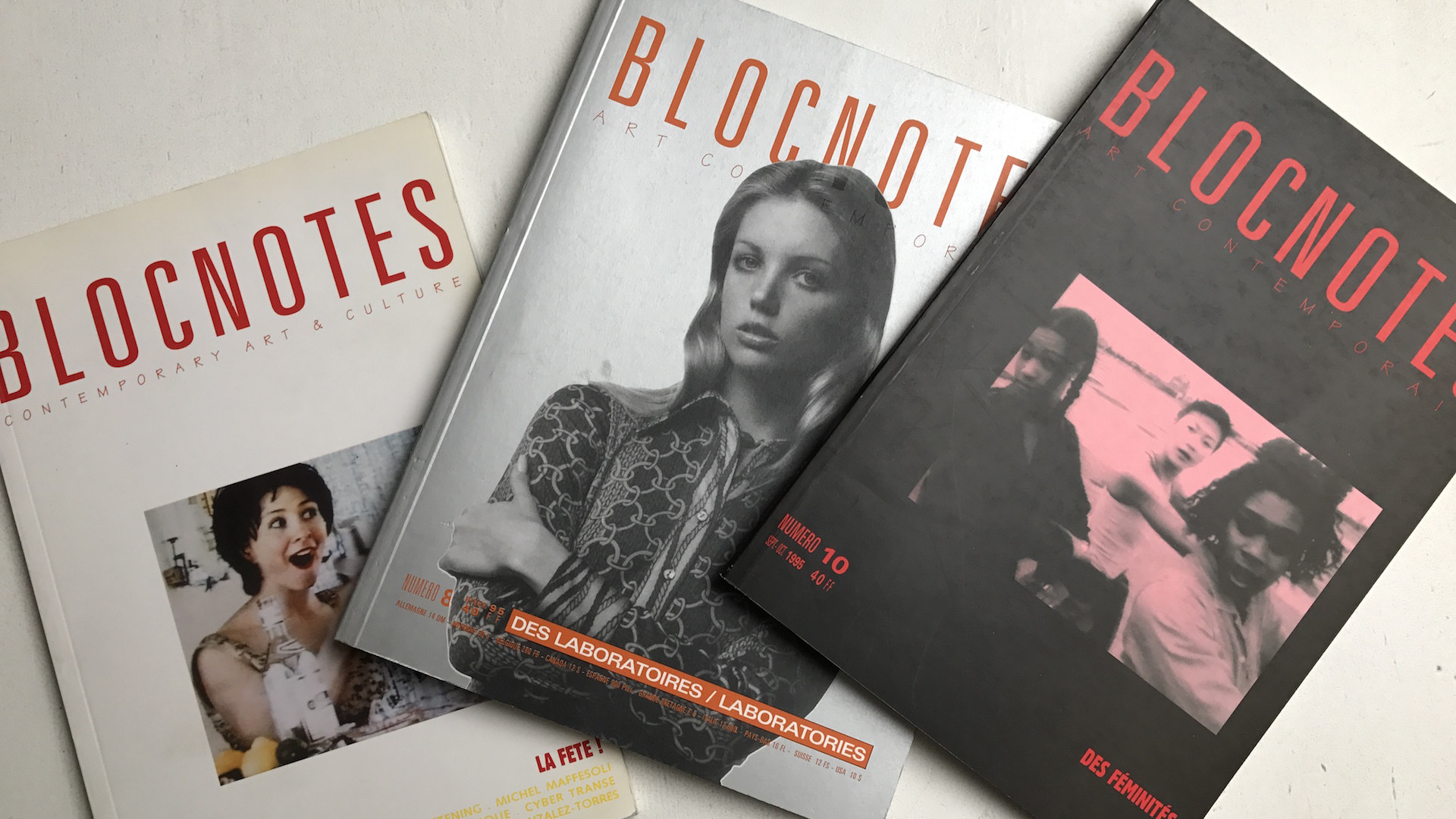
A Short History of Art Reviews in France from the Mid-Nineties to today…
The year 1997 saw the birth of 02 in the midst of an effervescing publishing scene, full of inventions and new proposals, where the threat of a an all-encompassing digital replacement was not yet causing the last of the press magnates to quiver in their boots. In the French scene, there reigned, like some jealous mistress, the old lady called art press, whose chief editor, Catherine Millet, would before very long become the successful bestseller author we came to know later, while, at the gate, there jostled many a Rastignac in a hurry, impatient to steal her crown… Twenty years later, alas, art press and Roger Talon’s stainless-steel graphics are still with us, having made only a handful of extremely rare concessions to a period and a contemporary scene that have become more and more English-speaking and internationalized—one such concession, it just so happens, being to go bilingual— while young rebels who ushered in a gust of refreshing radicalness, like Omnibus, a very dense mag whose revolutionary gratuitousness would bestir many calling, foundered in an oblivion that was as regrettable as it was definitive… For all this, the “triumph” of art press is more like a Pyrrhic victory if we reckon that the French publishing scene has never managed to raise itself to the heights of successes such as Frieze and ArtReview, and the Italian publications Mousse and Kaleidoscope, whose cheeky good health underscores the many weaknesses of the French art press.
The historical context of the late 1990s
In the mid-1990s, a gaggle of new venues upset the drowsy landscape of French art reviews, peerlessly dominated by the afore-mentioned doyenne art press. Their names were Documents sur l’art, Omnibus and blocnotes, and they claimed to give a fuddy-duddy look to a certain way of regarding art criticism, a way which saw itself as Baudelaire’s heir, as is explained by Frank Perrin, founder of blocnotes with his associate Armelle Leturcq.1 Applicants dreamed of upsetting and re-inventing a publishing landscape which they deemed obsolete, with its rigid graphic design, its conventional formats, and its thoroughly dated approach to contemporary art: for boat-rockers, it was not only the review’s content that had to be teased, but above all its whole form, its economic model, and the context in which it appeared. For Perrin again, a review must not merely offer a “classic” editorial content in the form of a succession of texts presenting different angles, expressing well-worn ways of dealing with current art events and news, portraits, major articles, and reports: at the height of the “cross-disciplinary revolution”, a review is bound to take part in this mix by lending visibility to those other arts called dance, video, literature and techno, gradually invading the France of the 1990s by giving rise to mega-gatherings and raves and, in passing, relegating the concerts of the 1970s and 1980s to the rank of antiquities. The review was no longer an end in itself, it was no longer the place where a dreamed-of artistic landscape was manufactured in an idealized way, a forum of that social and political protest that it represented until the 1980s, while at the same time allowing its founders, all members of the intelligentsia in differing degrees, to put the result of their reflections into practice, sorts of spiritual melting pots where people concocted possibilities and remade the world in their columns. By becoming hybridized, by letting itself be “corrupted” by images2, and by becoming democratized thanks to the generalization of offset printing and ease of access to “word processing”, the review became a medium destined to go hand in hand with a broader artistic programme, extending from the exhibition room to the concert hall. The magazine, gnawing ever deeper into the turf of the review,3 was henceforth part of an expanded project, like the eponymous event produced by Laurent Godin in the mid-1990s which, as this latter explains, can be analyzed as the extension of the printed document by other means.4Furthermore, these media which gained momentum at the height of the economic crisis tallied essentially with a defined artistic landscape which brought a small group of artists together around two or three emblematic curators: so it was with Documents sur l’art, the review founded in 1992 by Nicolas Bourriaud and Eric Troncy, whose ephemeral existence went hand in hand with their emergence on the French art scene by enabling them to polish their theoretical weaponry in its columns, before these latter turned into statements about their upcoming exhibitions. Although Documents only lasted five years, the careers of Nicolas Bourriaud, Eric Troncy and their stable of artists (from Dominique Gonzalez-Foerster to Liam Gillick, by way of Philippe Parreno and Pierre Huyghe) were soundly launched.
Yielding to the irresistible attraction of the money arguments of brands and fashion, some of these new shoots which people thought were heirs of the whacky magazine Actuel, drifted off towards horizons even more removed from a henceforth discredited formal and textual austerity: publications like Purple and Crash slowly but surely turned into quasi-fashion magazines, glossies which only differed from women’s magazines through the guarantee-like signature of ancient glories of criticism, thus rejoining the cohort of chic, hip magazines like L’Officiel and Numéro, where the presence of art appeared more like a cool décor than a real forum for discussion.
But every counter-reform has its reform: after the short-lived episodes of Omnibus, blocnotes and Documents, various currents appeared simultaneously within the French landscape, some corresponding more to an attempt to rekindle the fame of a hardline brand of criticism, somewhat austere at the level of graphic design, while others underwrote the idea of an incarnated criticism, promoting a certain idea of French style, awash in literary references. In 2005, the philosopher and economist Frédéric Wecker launched a new publication which seemed keen to directly rival the immutable art press, this latter having valiantly prevailed in the gap between the end of the rebellion and the return to classicism. In many respects, Art 21 and art press are close: same format, same spare graphics, same absence of embellishment in the text/image relation, no Kaleidoscope-like boxes, no Mousse-like coloured backgrounds, no double pages suspected of “visually” over-illustrating a text once again promoted for what it is, namely a logical development, a demonstration, a thesis. Art 21 would die in 2011 after 31 issues, leaving the field open to its supposed rival, which stayed on course, and clung to a formula which was only jostled by the creation of a supplement, art press 2, which served to provide more in-depth thematic development. The abrupt dismissal of a serious—perhaps too serious—candidate for the job of championing art-critical publications in France can possibly be explained by too great a formal rigidity at the moment when people were re-discovering a certain taste for inventive and confident graphics. The lengthy articles in Art 21 no longer seemed in step with the idea of the magazine which now prevailed, where the reader does not necessarily seek to plunge into at times laborious and controversial theoretical debates,6 but rather into a sort of mixture between visual entertainment and neuronal agitation: in the mid-2000s, the magazine option definitely took precedence over the review option at both news-stands and publishers’ stands. The review 20/27, which appeared two years after the creation of Art 21, would undergo the same fate a year later.But supported by a famous academic, Arnaud Pierre, and an internationally recognized art critic, Michel Gauthier, 20/27 had everything needed to enjoy a successful and perfect launch: refined graphic design, essays by leading authors about high-profile artists, very state-of-the-art analyses, and well-documented writings. There is nothing more to say about the quality of the contributors mercilessly guided by the Gauthier-Pierre twosome, except that here again it was the positioning that seemed offbeat: 20/27 calls to mind a bit too much the review Artstudio, the major reference of the 1970s, whose graphic approach and format it espoused. And its format is perhaps not large enough, or too large: the reader (like the advertisers) now approves an exceptional format when what is involved is seeing art through a magazine—seen as an exhibition substitute—, and book size when what is involved is plunging into some in-depth reading. After six issues, its director, Pierre Denan, had to bring an end to a publication that he had supported singlehandedly, failing to find advertisers to produce a magazine with an insufficient circulation (500 copies). Roughly coincidentally (2003), Particules appeared, representing nothing less than a paradox in view of the predominant criteria in the magazine landscape: while the previous generation had once and for all condemned “Baudelairean” criticism and introduced an international openness as the new flavour of the day, Particules advocated a criticism dedicated to the French scene and invoked the figure of Bernard Lamarche-Vadel, champion of a literary-cum-romantic approach. Speaking out against a frenzied globalization unjustly glossing over the careers of French artists, the magazine “seeks to avoid all form of ‘newspeak’ and put an end to the stereotypes of writing on art”, quoth Gaël Charbeau, its founder, which at times produces ways of writing on the very edge of popular quintessential Frenchness… They nevertheless took an alternative route in terms of distribution, that of the free press using the network of galleries, art centres and museums. And this made it, in a way, the somewhat unlikely successor of publications like Omnibus and Pacemaker which, for their part, were determinedly aiming their columns at the international scene. Unlike 20/27 and Art 21, it is not the financial argument which put an end to the publication of Particules, but rather the desire not to have to wrestle with the realities of a “sustainable” economy.
So in the early 2010s, the situation of the French publishing landscape was rather gloomy because two reviews with indisputable editorial dynamism and intellectual ambition suddenly ceased, as did another publication with a strong presence in the scene… For the hungry reader, he can still get his teeth into the unmoveable art press, which no crisis has managed to topple, and which merrily celebrated its 40th birthday in 2012: this is not the place to make an exhaustive tour of the French artistic press, so we shall confine ourselves, in a very arbitrary way, to publications which result wholly from commentary on and debate about contemporary art, thus in a way from criticism, even if this notion eludes any solid definition, and is subject to many forms of criticism, the main one perhaps being that criticism is no longer critical at all. So from this brief examination we shall resolutely exclude Beaux-Arts Magazine, L’Œil, Connaissance des arts and Le Journal des Arts, magazines which, it seems to us, have more to do with market and heritage and/or modern art, although these publications present within them contributions and reports to do with contemporary art which are altogether honourable, produced by editors thoroughly worthy of interest. Needless to say, we shall exclude ourselves from this discussion for obvious ethical reasons.
At the end of the 2000s, calls for new French art-critical publications seemed to remain unanswered: but this would be to overlook Frog, created in 2005 by Eric Troncy and Stéphane Moisdon in the lap of the Consortium at Dijon. The immediate goal of Frog was to set itself apart from the habitual practices of magazines failing to focus on the text/image differential which underpins the dynamics of a magazine: the decision not to limit the length of contributions was part of the desire regularly displayed by Eric Troncy to encourage the place of authors by refusing to carve up their writings. However, the artists discussed in this publication with its generous format are those very same ones whom Eric Troncy happens to criticize because they belong to the art industry which he condemns… Despite undeniable qualities, Frog did not manage to become the review of reference which it had set its sights on being. There are many different reasons for this, such as perhaps appearing at intervals too far apart (it’s a six-monthly review) to create any Pavlovian effect of visual recognition, having too esoteric a circulation, being a tad too expensive for a student’s pocket, and possibly having a graphic design that is a little too systematic.
No Man is a Prophet in his own Land
Above all, however, the change is coming to us from abroad, and mainly from Italy, with the veritable whirlwind represented by the advent of Kaleidoscope and Mousse on the European and thus French scene. Because if there were plenty of comets which have crossed the skies dotted with art magazines in the late 2000s, it is indeed these two publications which instantly lent a fuddy-duddy look to many of our colleagues with their XXL format, their graphic fireworks, the daring of their contents, and the desire to make the rounds of planetary current goings-on in a single publication, much more voluminous than art press, and free, to boot: it is hard to resist the lure of the two mags which have all of sudden carved out the lion’s share for themselves thanks to an extremely aggressive sales policy, verging on dumping… It matters little, though, for galleries and art centres which have been pouncing on these new arrivals who are scooping up the bets. Mousse and Kaleidoscope invaded the space occupied by art reviews, and have been causing upheavals in it in lasting ways. Then, having exhausted the joys and problems of distributing a free review, which is also thick and expensive to produce, they have become paying, having built up a loyal public of advertisers and readers. A success which can probably be explained by significant private backing at the base, and an abundant panel of editors and writers hailing from Europe’s greatest art history faculty, the one in Milan, but above all thanks to the extraordinary energy of their globe-trotting chief editors. And this “Italian-style miracle” is not restricted to the bonnie good health of the Milan-based Mousse and Kaleidoscope; we must make special mention of the Roman Cura which, well removed from the much fanfared arrival of the above-mentioned reviews, has slowly, and very discreetly, worked its way into the landscape, by developing a visual identity light years away from the flashy Kaleidoscope, while at the same proposing rich written contents.
If we consider Frieze, ArtReview, Spike, Texte zur Kunst, and the like, it has to be admitted that their inventiveness and daring come from elsewhere: it is foreign media which now represent the most relevant textual and graphic supply, with one or two rare exceptions.
A threatened biodiversity
So are (French) reviews condemned to disappear, outmatched in the way they present themselves and in their very principle, ringed on all sides by threats as diverse as the intensive circulation of images on the Internet, the loss of interest among galleries which now regard them as mere providers of commercial arguments, preferring to produce their own “bulletins”7, and the disengagement of a State for which culture is no longer even part of its campaign themes?8 But is it not the whole art press that is in danger, at least the one that still claims to bring some kind of “critical” dimension into a fine arts system which barely brooks any contradiction or doubt at the basis of criticism? In this art world 2.0, there is scarcely any place for discussion, debate, nuance, dialectic, and other non-binary systems of thinking which, until very recently, went hand in hand with the “reading” of contemporary art. Among all the consequences resulting from the massive intrusion of the web in the art world, one of the least is having transformed the old enlightened art-lover into a compulsive and “disloyal” consumer. We shall not dwell here on these consequences which have been described in many different places, but simply on the question of knowing whether this spectacular inflation of the visual, this unlimited and instant access to information, will get the better of magazines and reviews.
According to Marshall McLuhan, media never really disappear, they become concertina’d, they collide and become hybridized, like TV, an “old medium” which has never really disappeared but has seen the way we look at it and think about it basically upturned, as state propaganda and then a “liberator of brain time available for ads”,9 heading towards an open relation, synonymous with an exploded grid and layering, whose recipe we re-make as we wish, made up of replay programmes and diverse productions, personal videos and videos coming from the social networks and various dedicated websites, and so on. The great Canadian media theoretician was not necessarily someone who loved the emerging media which jostle our daily round and revolutionize our relation to the perceptible; on the contrary, he could have been regarded as a whistle blower, already issuing warnings against the appropriation of these latter by private companies: “Once we have surrendered our senses and nervous systems to the private manipulation of those who would try to benefit from taking a lease on our eyes and ears and nerves, we don’t really have any rights left. Leasing our eyes and ears and nerves to commercial interests is like handing over the common speech to a private corporation, or like giving the earth’s atmosphere to a company as a monopoly.”10 The world 2.0 into which we have already almost completely toppled runs a high risk of having unsuspected consequences on our actions by way of the hold it has gained over our consciousness and the weakening of language, which it is already well on the way to achieving. The programmed disappearance of magazines and reviews may seem trivial compared to certain much more violent phenomena: it has been widely shown during the latest American electoral campaign that the massive use of social networks as a source of information had a tendency to depreciate the power of facts in favour of what has been called the “post-truth”: and we know only too well where this has led us…We do not in fact want to compare the impact of the disappearance and declining readership of great magazines like Newsweek and L’Obs to those of art reviews… Except by taking up on our own behalf the teachings of McLuhan, who saw in art a way of resisting the significance of these new media: “I am curious to know what would happen if art were suddenly seen for what it is, namely, exact information of how to rearrange one’s psyche in order to anticipate the next blow from our own extended faculties. Would we, then, cease to look at works of art as an explorer might regard the gold and gems used as the ornaments of simple nonliterates? At any rate, in experimental art, men are given the exact specifications of coming violence to their own psyches from their own counter-irritants or technology. For those parts of ourselves that we thrust out in the form of new invention are attempts to counter or neutralize collective pressures and irritations. But the counter-irritant usually proves a greater plague than the initial irritant, like a drug habit. And it is here that the artist can show us how to ‘ride with the punch’, instead of ‘taking it on the chin’. It can only be repeated that human history is a record of ‘taking it on the chin’.”11
The resilience of pockets (of resistance)
Reviews still represent an alternative to a line of thinking, that of the art industry, which is increasingly colonizing minds and activities. They can be compared to those temporary autonomy zones which Hakim Bay talked about, the famous TAZ, from which they borrow the principle of a guaranteed independence within their boundaries: like daily newspapers (which have not disappeared, contrary to all those catastrophic predictions), these are worlds in themselves which produce a temporal suspension twice hemmed in by their periodic publication and by the time it takes to read them, running counter to the perpetual acceleration which hallmarks our world 2.0. A magazine and a review must continue to be pockets of resistance in the face of mercantile imperatives and the quantifiable logic of ‘likes’ which is gradually replacing the liking of criticism and argued evaluation. But nor should we push too far the metaphor of the pocket of resistance because it is not altogether correct, and it is dangerous: it hides the kind of extreme connectivity which links all agencies and all resources, intellectual, aesthetic, circumstantial and perceptible, necessary for the making of art, and in which reviews and magazines have until recently had a major place. In this extremely difficult context—that of a France suffering from the handicap of a visceral attachment to a language which has all but vanished from the international art arena—reviews have developed strategies which are more akin to survival techniques, setting themselves up in niche economies and maximizing the benefits of certain kinds of assistance with employment, and similar ministerial grants, but also stepping up their quest for solution so as to remedy the drop in those principal resources called advertising and subsidies.So the review Volume came into being thanks to an assistance grant for the first issue, and then subsequently developed a publication concept that “observes and questions contemporary art through the lens of sound, ‘heard’, according to an expanded definition incorporating music, noises, the voice, silence, and its depiction by way of sculptural, pictorial and graphic forms, and its performative potential, as well as the whole socio-cultural dimension that it is capable of conveying”, as its co-founder Raphaël Brunel explains. The review then attracted the backing of a major sponsor which enabled it to operate until such time as its founders wanted to pursue that unusual experiment by other means, perhaps closer to a curatorial dimension. The review Roven also fills a dedicated space, that of drawing, making the most of the recent enthusiasm for this discipline which has seen the creation of specialized fairs like Drawing Now and nothing less than an alternative economy around the praxis: Roven has produced a dozen issues with generous page layout sophisticated graphic design, and a body of well-documented essays and contributions, and swiftly found its readership; on the other hand, it had to alter the frequency of its publication in 2015, when it became annual, while at the same time developing in tandem an acclaimed production of books.
Pétunia, created by a group of women artists and curators, deals in the main with the female issue, thus trying to make up for and redress an evident difference in treatment between female and male artists in the media, whatever they may be: between the fanzine and the opinion-based review, Pétunia appears quite irregularly, offering carte blanche to young graphic artists and designers, who are forever improving it. But its three directors are unpaid. Dorothée Dupuis, its chief editor, also runs the review Terremoto, which is slowly but surely finding a foothold in the landscape of French reviews, although, oddly, the territory it covers and the scene it most specifically explores range from California to Colombia. The finances of Terremoto come from a twofold or rather threefold source: “classic” advertising from galleries and art centres, various project assistance schemes, which it draws in left and right from foundations and ministries, but also what Dorothée Dupuis calls “donations”, which refers to that shift which Eric Troncy refers to.12 This three-part economy, coupled with the parallel development of a site dedicated to reports, might represent a fairly relevant example of a strategy of resilience for reviews trying desperately to renew their financial strategies.
The review Code was created in 2005 in Brussels by a group of designers, and then moved to France, taken over by the twosome Laetitia Chauvin and Clément Dirié, who renamed it Code 2.0, before passing the flame to two young female curators from Marseille. If it looks like an artist’s review, as Laetitia Chauvin explains, Code 2.0 is still a fully-fledged review encouraging above all the visibility of young artists through an editorial policy based on the monographic articles devoted to them. It also gives the floor to the young authors who make up the core of its editorial board; like Pétunia, Code 2.0 is a free review: “The frugality of its economy”, explains Laetitia Chauvin, “enables it to produce, through good times and bad, two issues a year, relying on partnerships, a few inserts from friendly galleries, and original sources of support like that of the association of Friends of the School of Fine Arts in Paris. As for Initiales, it is mainly sponsored by the Lyon School of Fine Arts and, as a result, it is hard to regard it as an independent review, in the same way as the previously mentioned ones, for which the financial issue is crucial, even though its concept— devoting each issue’s contents entirely to an artistic or literary personality— makes it interestingly unusual.
The latest of these reviews has the strange title L’incroyable, and offers a stance that is no less surprising, which is that of the young years and genesis of very famous artists: the second issue is devoted to Jim Shaw and explores the L.A. context of the 1970s in which the Californian artist grew up, a pretext to re-visit a very lively period and scene using thirty- odd very eclectic contributions in both their form and approach… Funded in part by a one-off grant from the Ile-de-France Region, this new review is also adding to its sources of financial aid, calling on patronage (agnès b), and pre- purchasing, but also relying on sales to achieve a balanced budget. PeepingTom also represents something exceedingly unusual in its principle, which is to focus on a metropolis to try and draw an impossible portrait based on interviews, critical writings, reportages, portfolios, photo dossiers, narratives and contributions defying pigeonholing. The latest issue took as its target a (greater) Paris, after Berlin and Istanbul, and strove to reweave the threads of a metropolis whose ties and resources obviously lie in the suburbs and provinces, giving pride of place to alternative scenarios. Even if Peeping Tom cannot really be seen as an example for financing, because its brief does not include its continuation, it has the merit of singling out the problems inherent to the sector and the absolute obligation to invent new kinds of modus operandi. May, which appeared at the end of the 2000s, is also in the tradition of Trouble and Fresh Théorie, at least with regard to the format and density of their articles; in other respects, the review run by Catherine Chevallier differs by the desire to be wide open to foreign authors, and keep things turning over. May comes across like an experimental platform designed to question the present-day forms of criticism by comparing them with other ingredients of intellectual life, such as cultural policies and art theory; it also pays a lot of attention to the literary dimension of criticism. Concerned with being internationally distributed, and remaining as independent as possible, the editorial board is thinking about the need to introduce new sources of financial backing, aware as it is, and its colleagues are, about the end of the welfare State. Broadening foreign distribution by consolidating its own distribution networks, and thus increasing the number of subscribers, appealing for donations by creating a board of donors, and ushering in a quasi-gallery economy by way of the sale of limited artist’s editions, such are the avenues being explored by May, which might serve as an example for addressing the drop in subsidies and the end of the classic advertising model, in order to allow the continued existence of these pockets of freedom so vital for the biotope of contemporary art, represented by reviews and magazines.
1 http://www.lesinrocks.com/1999/03/31/musique/concerts/revue-blocnotes-expo-expander-1-0-11229973/
2 “Reviews, with their mixtures of genres, obviously lend themselves to all sorts of transversal readings, with images becoming vehicles of unexpected interferences and transfers and requiring as much a contribution of classical tools such as the social history of art as others which are less so, such as gender studies, the history of technologies and that of the satirical vignette.” Rosella Froissart, Les revues d’art, un chantier, Presses Universitaires de Rennes, p. 30.
3 We will remain intentionally artistically vague in relation to the difference between the magazine and the review, a vagueness which tallies perfectly with the English term of ‘art magazine’, which makes no distinction between these two kinds of publication, and which refers more to the idea of a field or area of interest than to any distinction associated with the publication itself: among our Anglo-Saxon friends, ‘art magazine’ applies as much to Artforum as to ArtReview, Frieze and Parkett which, in many aspects, are radically different. We assume this confusion associated with an absence of precise criteria for making a distinction between a magazine and a review. Yves Chevrefils Desbiolles talks about “thought in action” (Rosella Froissart, Les revues d’art, un chantier, Presses Universitaires de Rennes, p. 3), an expression which sums up the “imperious desire to express something”, thus making a distinction between, on the one hand, reviews and dailies, weeklies and magazines – designed to target “consumers” – and, on the other, separating the review from the book, which a long time-frame makes inappropriate for displaying any swift intellectual reaction: this distinction made by Chevrefils Desbiolles seems somewhat impractical today, when hybridizations are frequent between magazines and reviews which only differ in their format: it cannot be denied, for example, that Artforum has the quality of a publication that is a catalyst for ideas, and a producer of contents, which does not stop it being monstrously overloaded with advertisements.
4 http://www.lesinrocks.com/1999/03/31/musique/concerts/revue-blocnotes-expo-expander-1-0-11229973/
5 As such they perpetuate one of the principles underpinning the way reviews operate, which is their inclination towards agglomeration, because their primary reason for being is the “concern to stand apart from their foes and gather their friends about them”. Recenser les revues, Pluet-Despatins, quoted by Rosella Froissard in Les revues d’art, un chantier, Presses Universitaires de Rennes, p. 23.
6 See the attack on Nicolas Bourriaud’s relational aesthetics in an article signed by Tristan Trémeau and Cédric Loire (“Les mauvais autres”, Art 21 no. 5) and the scathing riposte inflicted upon them by the same Bourriaud in a right of reply which will remain in the history books (Art 21 no. 6, “[…] nos deux gauchistes en peau de lapin…” which can roughly be translated by “our childish leftists”).
7 “To be honest, it’s not quite accurate to write that art magazines are headed for extinction. Some eminent galleries (Gagosian, Almine Rech, etc.) have already launched magazines of their own, in which they promote the artists they represent and call on perfectly reputable critics for the task”, Éric Troncy Art world 2.0, http://purple.fr
8 See the report by Michel Guerrin, Fillon, Juppé… Et la culture ? Le Monde of 26 November 2016, p. 21
9 To borrow the words of Patrick Le Lay, former CEO of TF1, who wanted to free up available brain time to make TV viewers more receptive to commercial messages.
10 Marshall McLuhan, Understanding Media – The extensions of man, ed. Mcgraw-Hill Book Company, New York, 1964.
11 Marshall McLuhan, op. cit.
12 “Galleries think no longer in terms of ‘advertising’, but in terms of ‘support’, because it makes little sense to publicize gallery activities through art magazines in an age when information circulates in other ways. Now the only reason to advertise in a magazine is to support the magazine financially. In other words, you make a donation, the kind you might make to an organization that strives to protect endangered species.” Éric Troncy, Art world 2.0, http://purple.fr
- From the issue: 80
- Share: ,
- By the same author: Curator’s marathon : Frac Sud, Mucem, Mac Marseille, Are We All Migrants?,
Related articles
Some white on the map
by Guillaume Gesvret
Toucher l’insensé
by Juliette Belleret
An exploration of Cnap’s recent acquisitions
by Vanessa Morisset

